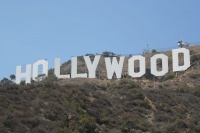Middle class
From The Art and Popular Culture Encyclopedia
|
"Les Bourgeois, c'est comme les cochons", refrain from anti-bourgeois song "Les Bourgeois" by Jacques Brel. "[M]arx would have called Flaubert a bourgeois in the politico-economic sense and Flaubert would have called Marx a bourgeois in the spiritual sense; and both would have been right since, Flaubert was a well-to-do gentleman in physical life and Marx was a philistine in his attitude towards the arts" --Nabokov in Lectures on Literature. |

Illustration:Liberty Leading the People (1831, detail) by Eugène Delacroix.
|
Related e |
|
Featured: |
The middle class is a social and economic class lying above the working class and below the upper class, the groups in society composed of professionals, semi-professionals, and lower-to-middle managerial level workers.
History and evolution of the term
The term "middle class" is first attested in James Bradshaw's 1745 pamphlet Scheme to prevent running Irish Wools to France. The term has had several, sometimes contradictory, meanings. It was once defined by exception as an intermediate social class between the nobility and the peasantry of Europe. While the nobility owned the countryside, and the peasantry worked the countryside, a new bourgeoisie (literally "town-dwellers") arose around mercantile functions in the city. Another definition equated the middle class to the original meaning of capitalist: someone with so much capital that they could rival nobles. In fact, to be a capital-owning millionaire was the essential criterion of the middle class in the industrial revolution. In France, the middle classes helped drive the French Revolution.
The modern usage of the term "middle class", however, dates to the 1913 UK Registrar-General's report, in which the statistician T.H.C. Stevenson identified the middle class as that falling between the upper class and the working class. Included as belonging to the middle class are professionals, managers, and senior civil servants. The chief defining characteristic of membership in the middle class is possession of significant human capital.
Within capitalism, "middle class" initially referred to the bourgeoisie and the petite bourgeoisie. However, with the impoverisation and proletarianisation of much of the petit bourgeois world, and the growth of finance capitalism, "middle class" came to refer to the combination of the labour aristocracy, the professionals, and the white collar workers.
Bourgeois values include high rates of house ownership and jobs which are perceived to be secure.
By the end of the twentieth century, more people identified themselves as middle class than as lower or "working" class (with insignificant numbers identifying themselves as upper class).
See also
- Bourgeoisie
- Classlessness
- Cultural hegemony
- Cultural imperialism
- Disenchantment
- Dominant culture
- Family values
- Gemütlichkeit
- Habitus (sociology)
- Iron cage
- Mainstream
- Middle of the road
- Nuclear family
- Petite bourgeoisie
- Philistinism
- Social environment
- White-collar
- Yuppie
- The Lonely Crowd


